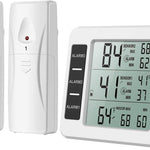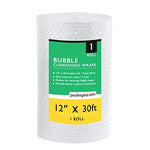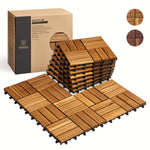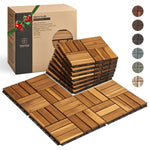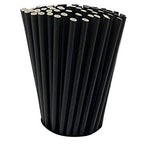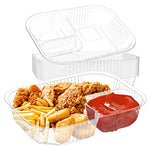You have no items in your shopping cart.
Welcome to the ultimate guide on Rain Bird Drip Irrigation! If you're a gardening enthusiast or a homeowner looking for a smarter and more efficient way to water your plants, you're in the right place. In this article, we'll delve deep into the world of drip irrigation systems, with a focus on the renowned Rain Bird brand. We'll explore the benefits, installation process, maintenance tips, and more to equip you with everything you need to know to optimize your watering practices. Let's dive in and unlock the secrets of Rain Bird Drip Irrigation!
Rain Bird Drip Irrigation: An Overview
Rain Bird Drip Irrigation is a cutting-edge watering solution designed to deliver precise amounts of water directly to the root zone of plants. This system operates by using a network of tubing, emitters, and connectors, ensuring water is delivered efficiently without wastage. It's an eco-friendly and water-saving approach that promotes healthier plant growth, reduces weed growth, and minimizes water runoff. Let's explore the key features of this remarkable system.
-
Efficiency and Water Conservation: Rain Bird Drip Irrigation systems are incredibly efficient, reducing water usage by up to 50% compared to traditional overhead sprinklers. Lush gardens can now be sustained without the guilt of excessive water consumption.
-
Precision Watering: The drip emitters in the Rain Bird system provide precise water delivery, ensuring each plant receives the ideal amount of water it needs for optimal growth.
-
Weed Control: By targeting the water directly to the root zone, this irrigation method helps prevent weed growth, as water doesn't reach areas where weeds typically thrive.
-
Versatility: Rain Bird Drip Irrigation can be customized to suit any landscape, from small home gardens to expansive commercial farms. It's adaptable, efficient, and versatile.
-
Time-Saving: Once installed, the system operates automatically, saving you time and effort compared to manual watering methods.
Understanding Rain Bird Drip Irrigation Components
To set up an efficient Rain Bird Drip Irrigation system, it's essential to understand the key components involved. Let's take a closer look at each element and its role in the overall system.
1. Main Supply Line
The main supply line is the backbone of the drip irrigation system, responsible for delivering water from the water source to the rest of the components. It's typically made of durable materials like PVC or polyethylene, ensuring longevity and resistance to environmental factors.
2. Drip Tubing
Drip tubing is a crucial component that carries water from the main supply line to individual plants. It comes in various diameters, allowing you to customize water flow based on the needs of different plants.
3. Drip Emitters
Drip emitters are responsible for releasing water in controlled amounts directly to the plant's root zone. They come in different flow rates, allowing you to tailor water delivery to suit various plant types.
4. Micro Bubblers
Micro bubblers are similar to drip emitters but release water in a broader pattern. They're ideal for shrubs and larger plants that require more extensive coverage.
5. Connectors and Fittings
Connectors and fittings join the various components of the system, ensuring a leak-proof and secure setup. These are essential for optimizing water flow and preventing wastage.
6. Filters
Filters play a crucial role in preventing clogging of emitters and ensuring consistent water flow. They remove debris and sediment from the water before it reaches the drip emitters.
7. Pressure Regulators
Pressure regulators maintain the optimal water pressure for the system, preventing overwatering and ensuring the emitters function correctly.
8. Backflow Preventers
Backflow preventers protect your water supply from contamination by preventing water from flowing back into the main water source.
How to Install Rain Bird Drip Irrigation System
Installing a Rain Bird Drip Irrigation system may seem daunting, but with the right steps, it's a straightforward process. Let's walk you through the installation procedure.
- Design Your System
Before you start digging or laying tubing, it's essential to plan your irrigation system. Determine the layout of your garden, identify the plants' locations, and measure the distance from the main water source.
- Gather Your Tools and Materials
To install the system efficiently, gather all the necessary tools and materials, including drip tubing, emitters, connectors, stakes, and a hole punch.
- Prepare the Area
Clear the area of any debris, weeds, or rocks. Mark the positions of the plants you want to irrigate and the locations where you'll connect the tubing to the water source.
- Connect the Main Supply Line
Attach the main supply line to the water source, using appropriate connectors and fittings. Make sure it's secure and leak-proof.
- Lay the Drip Tubing
Run the drip tubing along the desired path, ensuring it reaches each plant. Use stakes to secure the tubing in place and prevent it from shifting.
- Install Drip Emitters
Attach the appropriate drip emitters or micro bubblers to the drip tubing at each plant's base. Double-check that each emitter is working correctly.
- Add Filters and Pressure Regulators
Install filters and pressure regulators at appropriate points in the system to maintain consistent water flow and prevent clogging.
- Test the System
Turn on the water supply and inspect the system for leaks or irregularities. Make necessary adjustments as needed.
Best Practices for Rain Bird Drip Irrigation Maintenance
Maintaining your Rain Bird Drip Irrigation system is crucial for its longevity and efficient performance. Here are some essential tips for keeping your system in top shape.
- Regular Inspections
Perform routine checks on the entire system to identify any leaks, clogs, or damaged components. Promptly address any issues to prevent further damage.
- Clean Filters and Emitters
Clean the filters and emitters periodically to ensure unobstructed water flow. Clogged filters and emitters can lead to uneven watering and reduced system efficiency.
- Adjust Watering Schedule
Adapt your watering schedule based on the changing seasons and the specific needs of your plants. During rainy periods, you may need to reduce watering to avoid over-saturation.
- Winterization
Before the onset of winter, make sure to drain the system and protect it from freezing temperatures. Frozen water can cause damage to the tubing and emitters.
- Monitor Water Pressure
Regularly check the water pressure to ensure it remains within the recommended range for the system's optimal performance.
Rain Bird Drip Irrigation vs. Traditional Sprinkler Systems
Many gardeners are familiar with traditional sprinkler systems, but how does Rain Bird Drip Irrigation compare? Let's explore the key differences and advantages.
-
Water Efficiency: Traditional sprinkler systems can lead to significant water wastage due to evaporation and overspray. Rain Bird Drip Irrigation directly targets the plant's root zone, minimizing water loss.
-
Precision Watering: Drip irrigation delivers water exactly where it's needed, preventing water from being wasted on non-plant areas or hardscapes.
-
Weed Control: Traditional sprinklers can inadvertently water weeds, promoting their growth. Drip irrigation helps reduce weed growth by targeting only the plants you want to nurture.
-
Versatility: Drip irrigation can be used in various landscapes, including uneven terrains and slopes, where traditional sprinklers may struggle to provide even coverage.
-
Plant Health: The consistent and controlled watering of drip irrigation fosters healthier plant growth and reduces stress on plants during dry periods.
Frequently Asked Questions (FAQs)
-
Q: How often should I water my plants using Rain Bird Drip Irrigation?
- A: The frequency of watering depends on factors such as plant type, weather conditions, and soil moisture levels. Generally, it's recommended to water deeply and less frequently to encourage strong root growth.
-
Q: Can I install Rain Bird Drip Irrigation myself, or do I need professional help?
- A: While the installation process can be a DIY project, seeking professional help ensures an optimal setup and reduces the risk of potential issues.
-
Q: Can I use Rain Bird Drip Irrigation for potted plants?
- A: Yes, Rain Bird offers solutions for container plants through their micro irrigation kits. These kits allow precise watering for individual pots and hanging baskets.
-
Q: Will Rain Bird Drip Irrigation work with low water pressure?
- A: Rain Bird Drip Irrigation systems are designed to work efficiently even with low water pressure, making them suitable for areas with water restrictions.
-
Q: Does Rain Bird offer smart irrigation solutions?
- A: Yes, Rain Bird offers smart controllers that can be connected to your Wi-Fi network, allowing you to control and monitor your irrigation system remotely through a smartphone app.
-
Q: How much can I expect to save on water bills with Rain Bird Drip Irrigation?
- A: On average, users report saving up to 50% on water consumption compared to traditional irrigation methods, leading to substantial water bill savings over time.
Rain Bird Drip Irrigation is a game-changer for gardeners and homeowners seeking an efficient and eco-friendly watering solution. With its precision watering, water-saving features, and adaptability, this system ensures your plants thrive while conserving water and effort. By understanding the components, installation process, and maintenance tips, you can harness the full potential of this innovative irrigation system.
So, why wait? Transform your gardening experience with Rain Bird Drip Irrigation and witness your plants flourish like never before. Embrace sustainability, save water, and take a step towards a greener and healthier garden.


